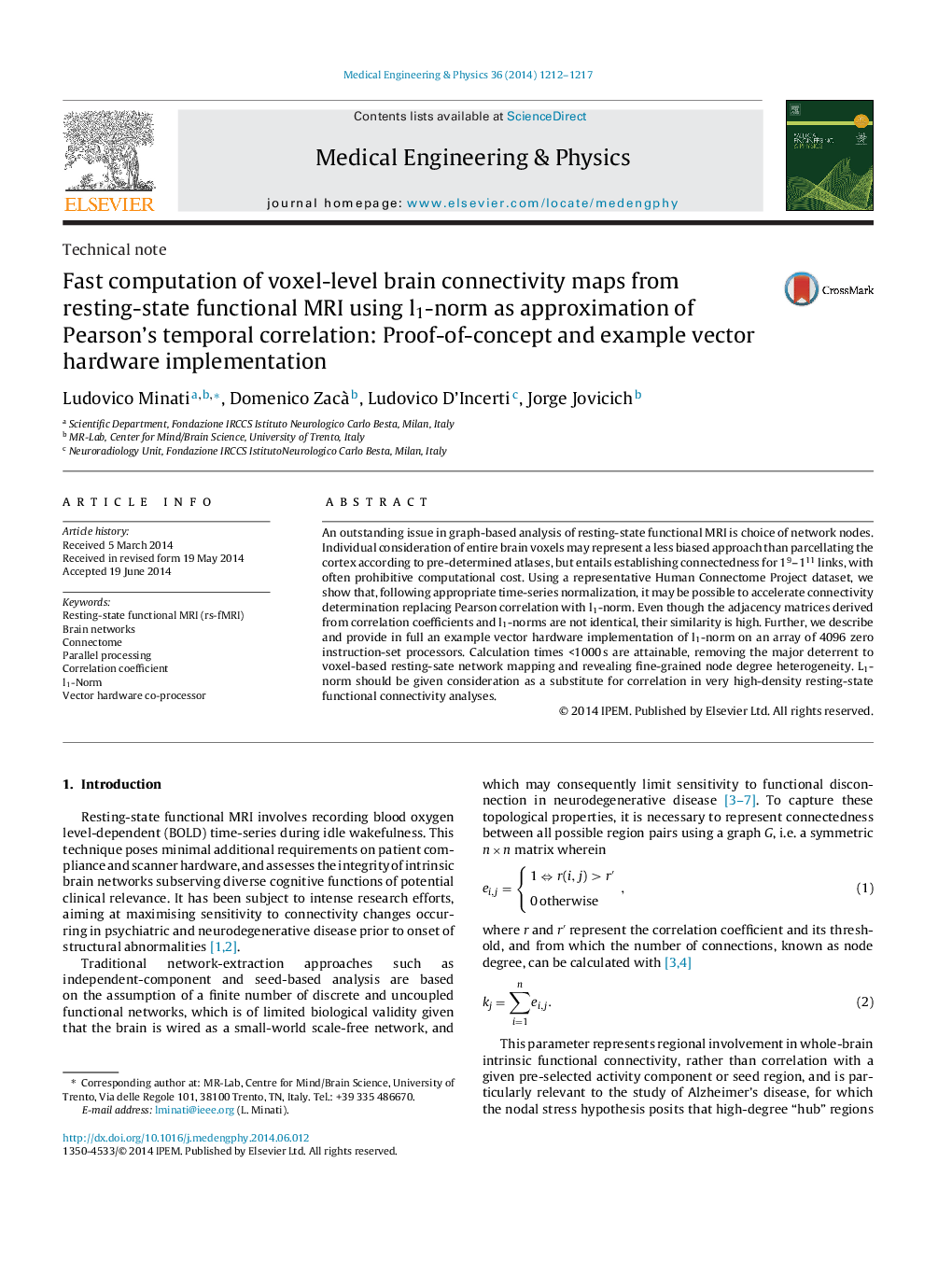| Article ID | Journal | Published Year | Pages | File Type |
|---|---|---|---|---|
| 875956 | Medical Engineering & Physics | 2014 | 6 Pages |
An outstanding issue in graph-based analysis of resting-state functional MRI is choice of network nodes. Individual consideration of entire brain voxels may represent a less biased approach than parcellating the cortex according to pre-determined atlases, but entails establishing connectedness for 19–111 links, with often prohibitive computational cost. Using a representative Human Connectome Project dataset, we show that, following appropriate time-series normalization, it may be possible to accelerate connectivity determination replacing Pearson correlation with l1-norm. Even though the adjacency matrices derived from correlation coefficients and l1-norms are not identical, their similarity is high. Further, we describe and provide in full an example vector hardware implementation of l1-norm on an array of 4096 zero instruction-set processors. Calculation times <1000 s are attainable, removing the major deterrent to voxel-based resting-sate network mapping and revealing fine-grained node degree heterogeneity. L1-norm should be given consideration as a substitute for correlation in very high-density resting-state functional connectivity analyses.
